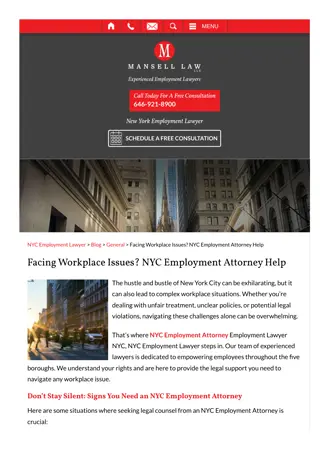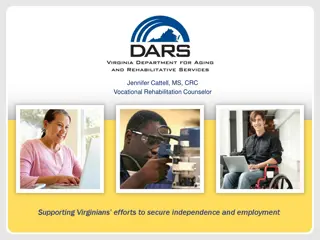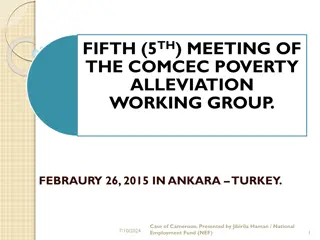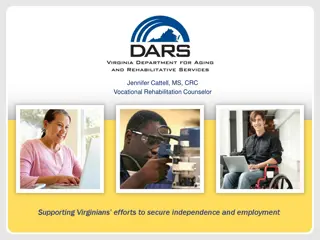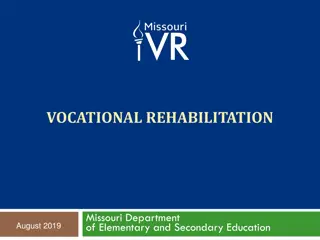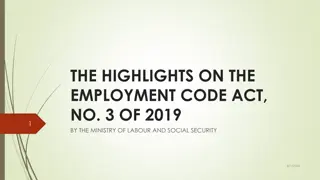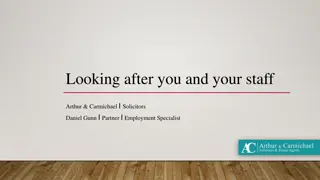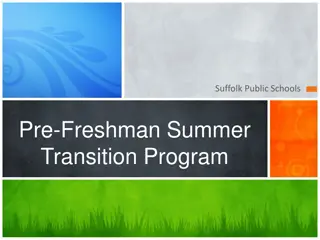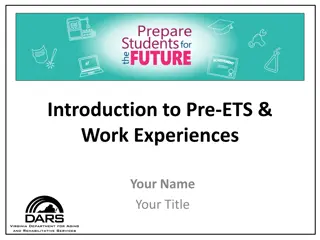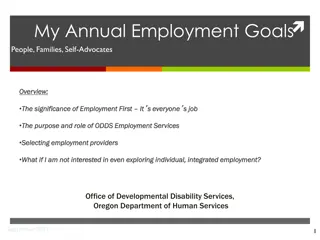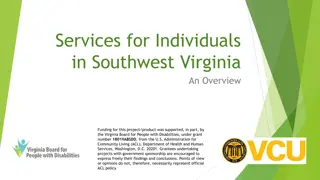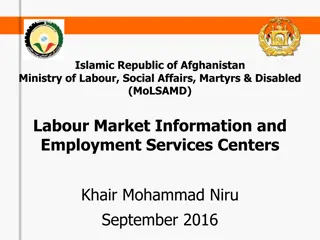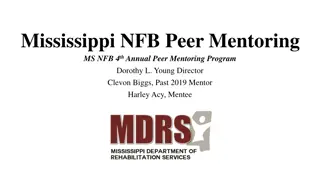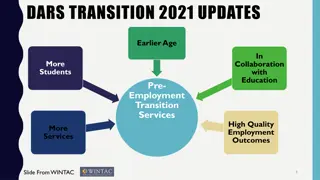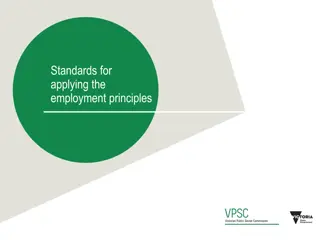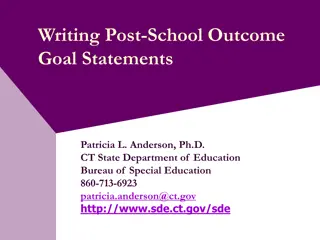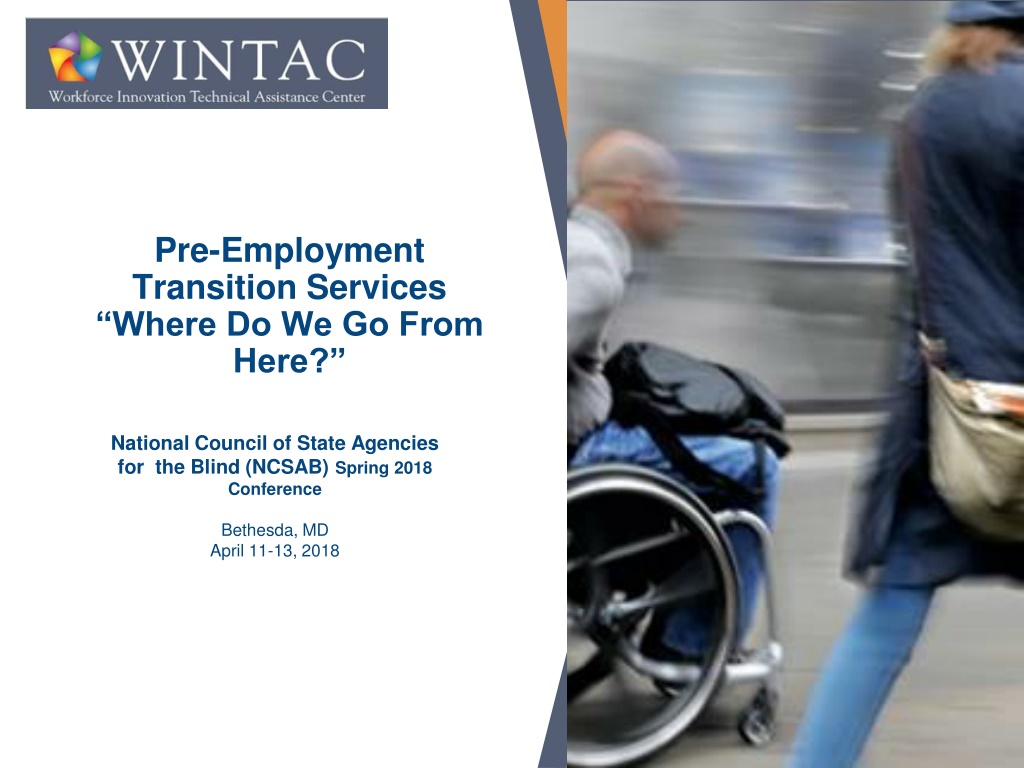
Transition Services for Students with Visual Impairments
Explore the challenges and opportunities faced by blind agencies in providing pre-employment transition services for visually impaired students. Discover innovative practices and misconceptions while discussing strategies for successful implementation. Join an interactive session to brainstorm solutions and enhance outcomes for these students.
Download Presentation

Please find below an Image/Link to download the presentation.
The content on the website is provided AS IS for your information and personal use only. It may not be sold, licensed, or shared on other websites without obtaining consent from the author. If you encounter any issues during the download, it is possible that the publisher has removed the file from their server.
You are allowed to download the files provided on this website for personal or commercial use, subject to the condition that they are used lawfully. All files are the property of their respective owners.
The content on the website is provided AS IS for your information and personal use only. It may not be sold, licensed, or shared on other websites without obtaining consent from the author.
E N D
Presentation Transcript
Pre-Employment Transition Services Where Do We Go From Here? National Council of State Agencies for the Blind (NCSAB) Spring 2018 Conference Bethesda, MD April 11-13, 2018
Roll up your sleeves! This interactive session will: Discuss the current status of Pre-employment transition services implementation, Address common misconceptions, Highlight innovative practices around the country, and Discuss issues, Resources, and Strategies for successful implementation Leave with one action item!
Unique Challenges/Opportunities for Blind Agencies The number of students with disabilities who are blind in the state How to spend the required reserve amount on a small group The resources in the state to provide services to these students The opportunity through authorized activities to increase capacity and improve outcomes for students who are blind or visually impaired.
Lets Go Today is organized differently than we have done before First some level setting on the what Table teams to brainstorm solutions that can be shared with the room Notes will be taken, summarized, and emailed to the participants Action!
Misconceptions Before using additional authorized pre-employment transition services: Every SWD must receive pre-ets in the state SWD must receive all five pre-ets services O & M Work Place Readiness Training Expenditure of funds reserved for the provision of pre- employment transition services on auxiliary aids and services for students with disabilities with sensory and communicative disorders who require such services to access pre-employment transition services. Auxiliary Aids and Services for Students with Disabilities In the Provision of Pre-Employment Transition Services
Innovative Practices Key Components Collaboration with other partners Reduces duplication of services Aligns programs, leveraging Youth oriented or youth led Leadership Self-determination Self-advocacy Opportunities for applied learning Variety of interactive activities, Hands on, use of technology, classroom activities, applied learning
Innovative Practices: Collaboration Arkansas Rehabilitation Services: VR and ED jointly sponsored a film camp led by Joey Travolta s Inclusion Films. VR covered the cost of the training Education covered the cost of student s meals, lodging, and transportation
Innovative Practices: Youth oriented or Youth led Nebraska Commission for the Blind and Visually Impaired: NE Blind: Peer Mentoring - participating in the NFB Career Mentoring Program which is for Pre-ETS and the required services. Pre-ETS age students get paired with a positive blind role model who is a mentor in the career field they have chosen. They will participate in monthly mentoring sessions and in quarterly group activities. Minnesota State Services for the Blind: SSB has developed a student worker program within the agency. SSB has hired one student worker who is providing clerical support for the Aging Eyes Initiative and one position is posted to work as a Podcast Aide DE General: Student led workshops and conferences
Innovative Practices: Variety of interactive activities: The South Carolina Commission for the Blind: 3D Printer Career Exploration Lab used to help transition students to explore careers using tactile models. Use 3D Printer Technology to assist blind and visually impaired students age 15-18 explore STEM Careers Virginia Department for the Blind and Vision Impaired: Students participate in a job exploration program in the area of robotics and cyber security. Students continue to explore these fields through additional projects over the next twelve months. New Jersey Commission for the Blind and Visually Impaired: College students learn how to maximize their college experience addressing barriers on campus, setting academic and social goals, as well as career development plans that provide a map to graduation and a guide to careers in their field of interest. Using each of these resources and a career-focused approach, students enhance their ability to become employed competitively in their field of choice. Maryland Office for Blindness and Vision Services: HS students who plan to attend college focus on increasing self-advocacy and IL skills, participate in college visits, job exploration counseling, and recreational activities to build self-confidence. They will also meet and interact with peers, explore how assistive technology can be best used in a college setting, and learn about the resources available to navigate through college.
Impact Outcomes & Quality Assurance Evaluating Student Progress Outcomes Measures for the 5 required Case Review Indicators 10
Evaluating Student Progress Pre/Post Test Surveys Outcome Instruments 11
Outcomes Measure Examples for Pre-ETS: Job exploration counseling: Identifies reasons to go work Identifies personal interests, values, personality traits, and current skills Identify at least one career choice as related to personal interests, values, personality traits Describes the jobs of various family members Accesses information about various jobs in the community, state, and country that are available to persons with and without disabilities Describes tasks, work environment, training and salary involved in various jobs (at least two) Evaluates job requirements and benefits for at least two career options Researches Local/State LMI that matches stated career interest 12
Outcomes Measure Examples for Pre-ETS: Work-based learning: Conducts informational interviews with individuals to obtain information about employment Participates (or has participated) in job shadowing experience(s)/job site visit(s) Familiar with employers safety concerns and addresses them appropriately Understands how to ask for assistance Demonstrates understanding of workplace policies and procedures (i.e. work-related benefits, social security deductions, emergency procedures, etc.) Understands how to follow up after job interview 13
Outcomes Measure Examples for Pre-ETS: Workplace Readiness Training: Understands basic money management concepts Student is able to articulate the importance of timeliness and demonstrates time management skills Can demonstrate appropriate social and interpersonal skills (teamwork, problem solving, conflict resolution, empathy, professionalism, good manners, etc.) Student can identify their network of resources at home, school, and in their community. Student can identify skills needed for communication in the workplace 14
Outcomes Measure Examples for Pre-ETS: Self Advocacy Describes disability clearly to others Describes necessary accommodations for completing tasks Requests appropriate accommodations when needed Schedules own appointments (e.g. doctor, transportation, etc.) Identifies and utilizes resources available to assist with goals Demonstrates an understanding of their legal rights and responsibilities Accesses and uses information in medium of choice Student demonstrates the ability to communicate their goals, support needs, interests, skills and abilities. 15
Outcomes Measure Examples for Pre-ETS: Counseling on opportunities for enrollment in comprehensive transition or postsecondary educational programs: Understands academic & occupational training needed to succeed in the workplace Identifies how to set up a college visit Understands the application and admissions process for post secondary education and training. Understands how to access and apply for financial aid Student can identify supports and assistive technology used by students who are blind at college, such as where and how to get alternative formats and textbooks. 16
Short & Long Term Outcomes Short term: Increase in the number of students with disabilities that receive a WBLE Long Term: An increase in the number of students and youth with disabilities that achieve competitive integrated employment outcomes. Long Term: Increase in Skills Gains and Credential Attainment for SWD who participated in pre-ets Quality Outcomes: Increase in earnings/wages Increase in number of SWD with employer provided benefits 17
Case Review Referral: Is there documentation of the referral? Is there evidence of parental consent if student is under the age of majority? Does the case record include supporting documentation for what is reported for the student in the case management system? Does the record include all needed 911 data for a reportable individual? Unique Identifier Social Security Number (if available) Date of Birth Race Required if student is in elementary or secondary education Ethnicity Required if student is in elementary or secondary education Student with a Disability 18
Case Review Student with a disability: Does the record include documentation that the individual satisfies the definition of a student with a disability Disability: (iep, 504, medical documentation) is the student currently enrolled in a recognized education program? 19
Case Review Need for Pre-ETS is there information in the case record that identifies what transition services the student has received under IDEA from the education agency is there information in the case record that documents discussion between the counselor and student about anticipated pre-ets needs? Did the VR counselor document the student s need and agreement for those Pre-ETS services provided? If yes, how is this documented and by whom? 20
Case Review Provision of Service: Did the VR counselor document which of the five required pre-ETS services were provided? How they were provided and by who? (i.e. individually or in a group setting; directly by the VR counselor or a vendor, etc.) Are the pre-ets services provided in the case record allowable pre-ets services in accordance with the agency s policies and procedures? For potentially eligible students is this information documented in accordance with the agencies policies and procedures? For eligible students with disabilities, are pre-ets services documented in the IPE? If pre-ets service was provided through a purchased service, is there documentation of the receipt of that service (ie report with invoice) 21
Case Review Provision of Service: If pre-ets service was provided by VR staff, is there documentation of the service provided and the date the service was provided? Were auxiliary aids and services needed by the student with a disability to access or participate in pre-employment transition services? If yes, is there sufficient documentation in the case record describing the need for such aids and services? Is this auxiliary aid coded to the specific pre-ets service being provided in order to access that service? If pre-ets services are complete, is there documentation demonstrating that no further services are needed or requested at this time? 22
Round Table Discussion and reporting Four topics - each topic will discuss the following: Challenges Resources Strategies including the use of Authorized Activities Collaboration and partnerships
Topic 1: Reservation and expenditure of the minimum 15% reserve funds for pre- employment transition services Required Coordination Authorized Increasing Capacity Partnerships and Collaboration
Topic 2: Serving Potentially eligible Students with Disabilities Developing Continuum of services Early start to career exploration light - 75% less calories Students who may need additional VR Services
Topic 3: Accessing Students with Disabilities Identifying Students with Disabilities Outreach to Students and Families Accessing Students determining who can provide services to students credentials and clearance Timing In School After school
Topic 4: ED & VR Who pays for what Sharing of information The agreement between the SEA and VR Not supplanting services (new or expanded services) Engaging Education: Outcomes Increase attendance; higher graduation rates
Topic 5: Tracking and Reporting Pre - Employment Transition Services Tracking non applicants vs applicants Tracking each of the five required services a student receives Tracking and reporting expenditures for pre-ets required coordination authorized
Wrap up, Report Out, & Next Steps
Thank you! Carol Pankow, Director Minnesota Department of Employment and Economic Development State Services for the Blind 2200 University Avenue #240, St. Paul, MN 55114 Direct: 651-539-2272 Melissa P. Diehl, M.A. Ed. CRC WINTAC Pre-Employment Transition Services The George Washington University Center for Rehabilitation Counseling Research and Education (CRCRE) (410) 430-9244 mpdiehl@gwu.edu Christine Johnson, M.A. Ed. CRC WINTAC Pre-Employment Transition Services The George Washington University Center for Rehabilitation Counseling Research and Education (CRCRE) (513) 882-3927 cj1957l@gwu.edu 30


